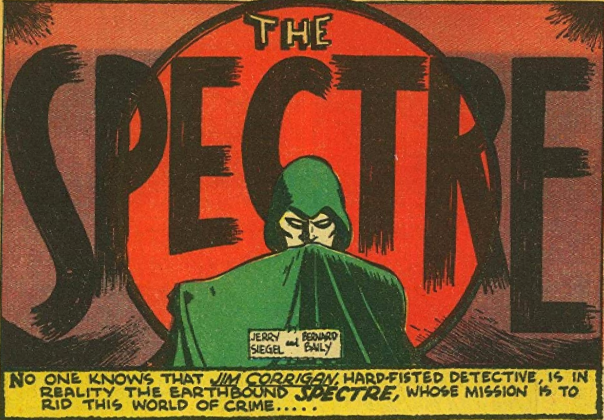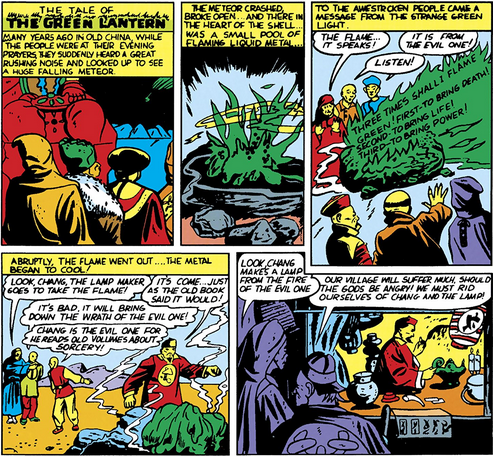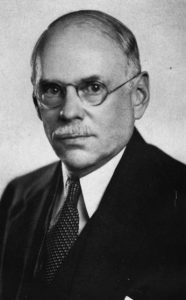In the Silver Age, radiation was a common way for superheroes to get their powers, particularly in the case of such early Marvel creations as Spider-Man, the Hulk, Daredevil, the Fantastic Four, and (in some accounts) the X-Men. It makes sense: atomic power, both as a fearsome weapon and as a potential energy source, was on the public mind.

But in the Golden Age, magic-based and supernatural-based characters were much more common. Not that they were absent from the Silver Age (Thor, Dr. Strange, the Phantom Stranger, Deadman, Zatanna, etc.). But look at this list of Golden Age characters with magical and/or supernatural origins: Blazing Skull, Blue Tracer, Captain Marvel (and family), Dr. Fate,* Dr. Occult, the Fiery Mask, the Flame, the (sometimes Green) Ghost, the Green Lama, the Green Lantern (original version), Hawkman and Hawkgirl (original versions), Ibis the Invincible, Johnny Quick,** Johnny Thunder, Kid Eternity, Mandrake the Magician, Merlin the Magician, Miss America, Mr. Mystic, Neon the Unknown, Samson, Sargon the Sorceror, the Shining Knight, the Spectre, Taia, Uncle Sam, Wonder Woman, and Zatara.

Origins in the “East” were quite common for the powers of such magic-based characters, particularly Egypt (Ibis, Captain Marvel, Hawkman and Hawkgirl) or Tibet (the Green Lama, the Flame, Mr. Mystic), though also, e.g., China (Green Lantern) and Mesopotamia (Dr. Fate, Sargon) – perhaps inspired by their radio/pulp ancestor the Shadow’s having gained in an undefined “Orient” the power to cloud men’s minds.




In the Silver Age, a number of magic-based characters were reimagined with sciencey (though not necessarily radiation-based) origins, e.g., Green Lantern and the Hawkfolk. (An exception is the original Blue Beetle, who went the other way: his 1939 science-based origin was retconned in 1964 into a magic-based origin, complete with an Egyptian connection.)
But subsequent to the Silver Age, perhaps as a result of the weakening of the Comics Code’s ban on horror tropes, magic-based characters seem to have enjoyed a resurgence (e.g., off the top of my head, Black Alice, Blade, Blue Devil, Deadman, Demon, Ghost Rider, Iron Fist, Lucifer, Madame Xanadu, Man-Wolf, Ragman, and Raven).
And in recent years, although science-based origins remain common, many superheroes whose origins were originally science-based have been reimagined (e.g., Sandman) or retconned (e.g., Swamp Thing, by Alan Moore; Spider-Man, by Joe Straczynski) as magic-based. (Though Blue Beetle has gone the other way again, his magical scarab being re-retconned as alien tech.)

* Although Dr. Fate’s origin originally had science-fiction aspects of a proto-von-Däniken type which gradually shifted toward being reconceived as pure magic:

** Johnny Quick gains his powers by reciting a mathematical formula, eventually revealed to be derived from an inscription on the wall of a Pharaoh’s tomb. Despite the sciencey trappings, I’m counting that as magic.




